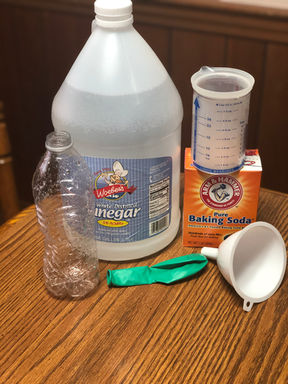
InTASC Standard #7- Planning for Instruction
InTASC Standard: Standard 7- Planning for Instruction
The teacher plans instruction that supports every student in meeting rigorous learning goals by drawing upon knowledge of content areas, curriculum, cross-disciplinary skills, and pedagogy, as well as knowledge of learners and the community context (InTASC, 2013).
Brief Description of Evidence:
During the Spring 2020 semester in EDUC 224 Introduction to Scientific Inquiry course, I created five science-based lesson plans for my students to complete remotely due to being at home because of the COVID-19 pandemic. I took the approach of John Dewey by creating lessons that allowed the learners to have hands-on learning experiences, even though the students would be completing them at home. I chose to create lessons for second-grade students and to use the standard 2.PS.2 Predict the result of combining solids and liquids in pairs. Mix, observe, gather, record, and discuss evidence of whether the result may have different properties than the original materials.
Analysis of What I Learned:
By implementing a cross-disciplinary approach for my science lesson, I was able to integrate reading and math. During one lesson of turning a liquid into a solid (making ice cream) the learners used their math skills by measuring the ingredients. They used reading by following the multi-step directions for the ice cream.
I learned how to create lesson plans that taught the many differences between solids and liquids, by searching Pinterest and reading teacher blogs. By reading teacher blogs, it gave me an idea of how to present the lesson in a new way.
Teaching remotely brought new challenges to the lesson. By creating and implementing lesson plans for students in a remote-learning environment, I learned how to adapt my lessons for the learners who did not have internet access. I planned the instructions for the lesson and implemented the lesson twice. I created a packet for those learners without internet and this allowed them to complete the lesson at home. The learners with internet could watch video recordings of myself discussing what they needed to do for each lesson. But with remote learning, I tried to think of materials they would have had at home to use for their science experiments.
Having my daughter, Kenley, home allowed me to see how her teacher approached online learning, and I gained ideas from helping her with her work. I appreciate how her teacher communicated with the families during the school closure. By communicating with families it put their minds at ease and allowed for questions to be answered. Before I ended my recorded lessons, I always made sure to let me students know I was available to them any time and was happy to answer any of their questions.
How This Artifact Demonstrates my Competence on the InTASC Standard:
I am able to demonstrate my competence in Standard 7 because my classmates and I created our own teacher community by working with each other to gather ideas for our lesson plans. In my future classroom, if the situation of COVID-19 or similar arises again, I could reach out to local businesses who would be willing to offer free wifi to students who would need it.
I also used cross-disciplinary skills like math and reading to tie into my lesson. John Dewey not only believed students learn by doing, but he also believes students draw from their previous knowledge to build upon what they already know. Because of the nature of COVID-19, I was not able to control their learning environment. Therefore, I had to adapt my lessons to their new home learning environment. I created the same rigorous lesson and implemented it twice. For the learners without internet, I created a packet for them to complete at home. The learners with internet, they could watch recordings of myself discussing what they needed to do for each lesson. Both lessons ensured students met the goal of meeting the connected Indiana Academic Standard. In the classroom, I would have had materials for the learners to use, but with remote learning, I tried to think of materials they would have had at home to use for their science experiments.







